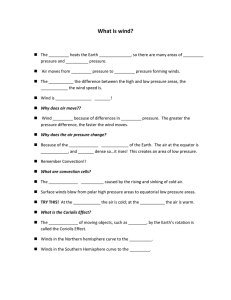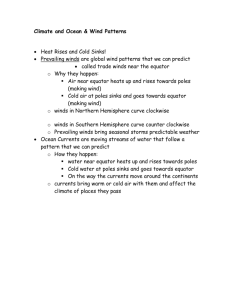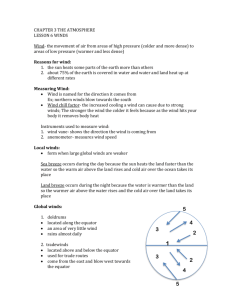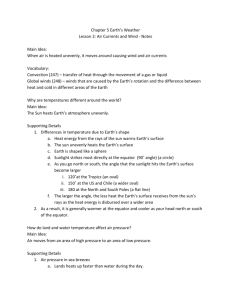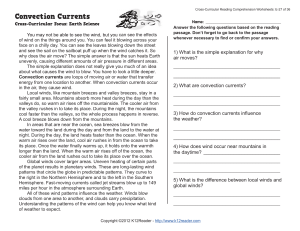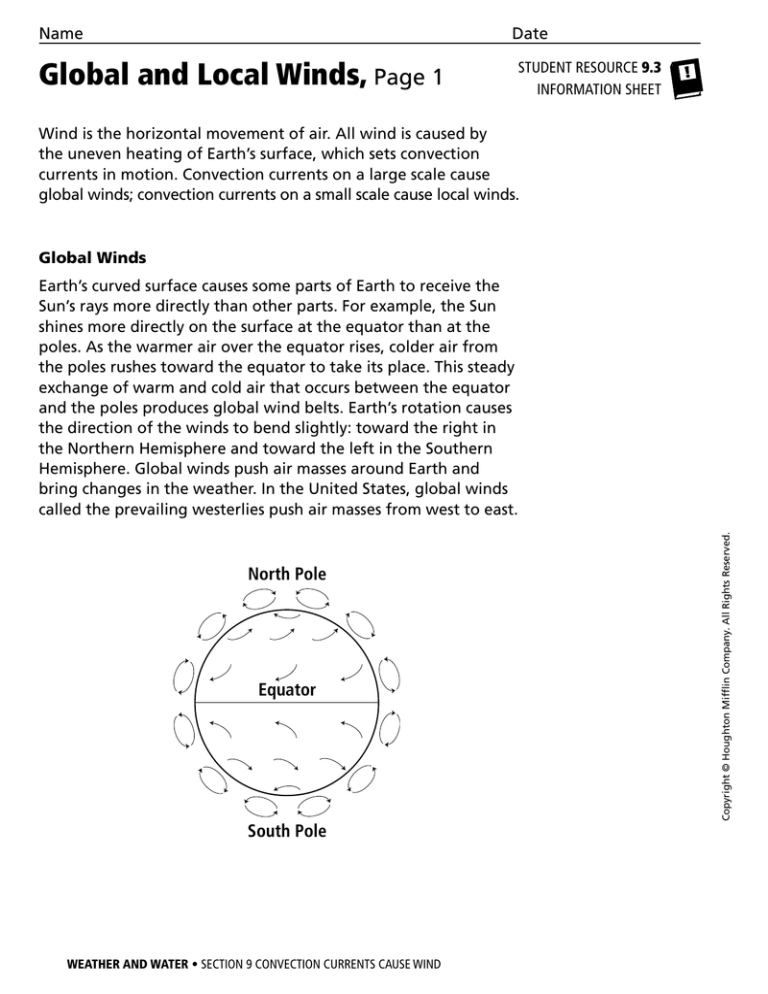
Name
Date
Global and Local Winds, Page 1
STUDENT RESOURCE 9.3
INFORMATION SHEET
Wind is the horizontal movement of air. All wind is caused by
the uneven heating of Earth’s surface, which sets convection
currents in motion. Convection currents on a large scale cause
global winds; convection currents on a small scale cause local winds.
Global Winds
North Pole
Equator
South Pole
WEATHER AND WATER • SECTION 9 CONVECTION CURRENTS CAUSE WIND
Copyright © Houghton Mifflin Company. All Rights Reserved.
Earth’s curved surface causes some parts of Earth to receive the
Sun’s rays more directly than other parts. For example, the Sun
shines more directly on the surface at the equator than at the
poles. As the warmer air over the equator rises, colder air from
the poles rushes toward the equator to take its place. This steady
exchange of warm and cold air that occurs between the equator
and the poles produces global wind belts. Earth’s rotation causes
the direction of the winds to bend slightly: toward the right in
the Northern Hemisphere and toward the left in the Southern
Hemisphere. Global winds push air masses around Earth and
bring changes in the weather. In the United States, global winds
called the prevailing westerlies push air masses from west to east.
Name
Date
STUDENT RESOURCE 9.3
INFORMATION SHEET
Global and Local Winds, Page 2
Local Winds
Small-scale convection currents arise from uneven heating on a
smaller scale. This kind of heating occurs along a coast and in
the mountains. Small-scale convection currents cause local winds.
Local winds blow over a much smaller area and change direction
and speed over a shorter period of time than global winds.
Land Breeze
Sea Breeze
Warm air
Warm air
Cool air
Cool air
Land
Copyright © Houghton Mifflin Company. All Rights Reserved.
Ocean
Land
Ocean
On a hot summer day at the beach,
the land heats up faster than the
water. The warmer air over land rises,
while the cooler air over the ocean
rushes in to take its place. This wind
is called a sea, or onshore, breeze.
After sunset, the land cools down
faster than the water. The warmer
air over the ocean rises, while the
cooler air over land rushes in to take
its place. This wind is called a land,
or offshore, breeze.
WEATHER AND WATER • SECTION 9 CONVECTION CURRENTS CAUSE WIND


